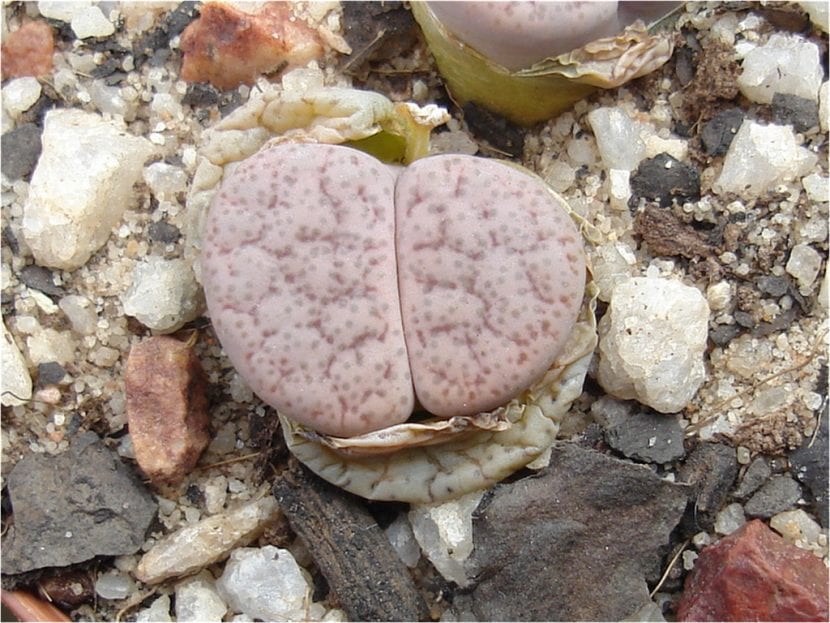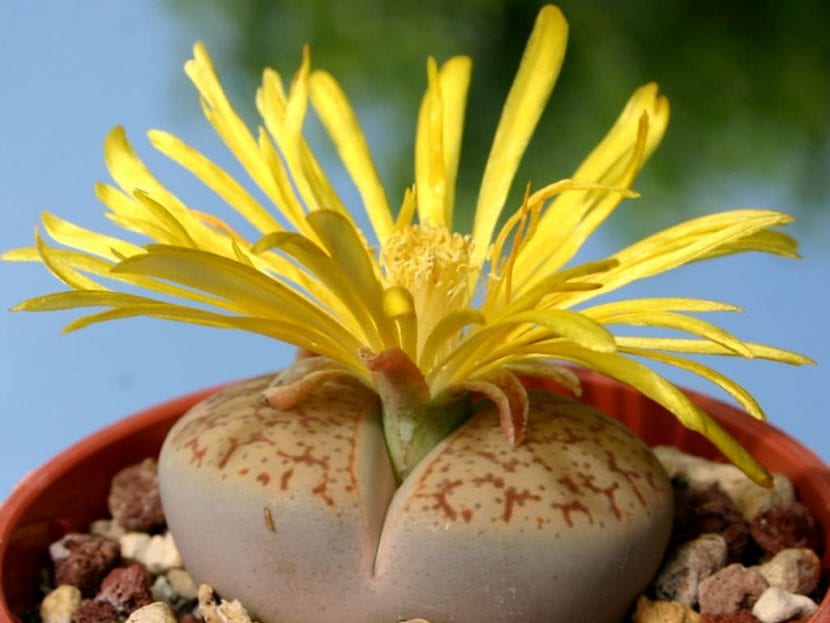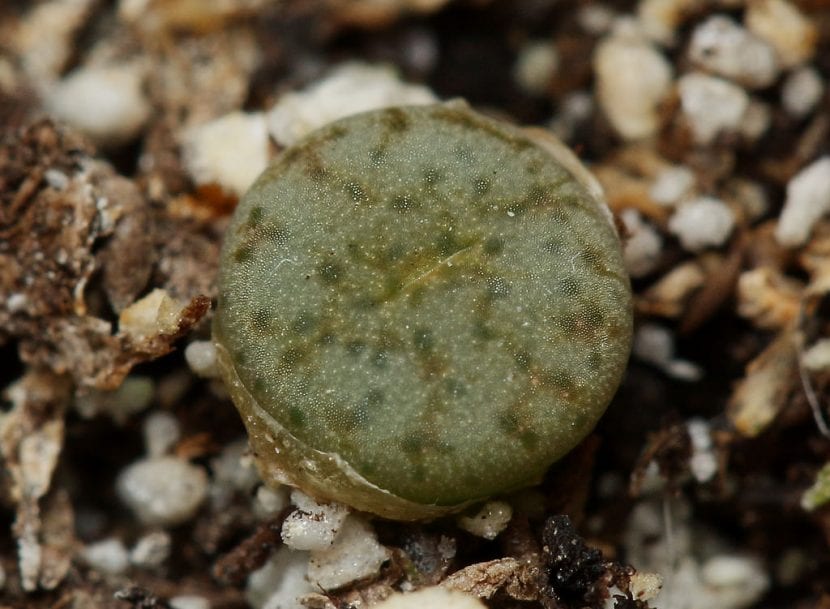
Image - Flickr / munnibee
It is one of the species popularly known as "living stones", a name given to it by how well it blends in, that is, it goes unnoticed, in its natural habitat. Experts and also those who collect it often call it Lithops pseudotrucantella., which is how it is known in the botanical world.
A succulent is not a small cactus, so much so that you can pick it up with two fingers of one hand and that, as a consequence, it is highly recommended to always grow it in a pot so as not to lose it. Its maintenance is not difficult, but there are a few things to keep in mind.
Origin and characteristics

Image - Worldofsucculents.com
This plant is native to Namibia (Africa), and It is made up of two attached sheets that are divided by a fissure in its upper part. These are in turn the very body of the species, which acquires a cylindrical or even conical appearance.
From the middle of both sheets flowers bloom towards spring and / or fall depending on the weather, usually one at a time, they are yellow, as well as new leaves as the 'old' ones wilt.
As a curiosity, to say that there are those who refer to it as a brain cactus, although in reality it has nothing to do with cacti. However, the pattern of colors and lines is very reminiscent of this organ. The total height of this Lithops does not exceed five or six centimeters.
What are their cares?

Exemplary a few months after germinating. // Image - Flickr / Picture Zealot
If you want to have a copy of Lithops pseudotrucantella., we recommend that you provide the following care:
- Location: it must be outside, in full sun.
- Substratum: as it lives in sandy soils, with excellent drainage, we recommend planting it in small grain pomx (1 to 4mm), or else mixing black peat with perlite (for sale here) in equal parts.
- Irrigation: the substrate must be allowed to dry between waterings.
- Subscriber: in spring and summer with liquid fertilizers for cacti and other succulents (on sale here).
- Multiplication: by seeds in spring.
- Pests: none, except for snails.
- Rusticity: it does not resist frost.
What did you think of this crass plant?